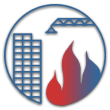 |
 |
 |
 |
|||||||
|
|
||||||||||
 |
 |
 |
 |
 |
 |
 |
 |
|||
 |
 |
 |
 |
|||||||
|
|
||||||||||
 |
 |
 |
 |
 |
 |
 |
 |
|||
BFRL Program
Service Life Prediction
The objective of the Service Life Prediction program is to develop, validate, and implement an advanced reliability-based methodology and associated metrologies for predicting the service life of polymeric materials exposed in their intended operating environment. This research is being conducted in partnership with industry, other BFRL divisions, NIST laboratories, and Federal agencies along with universities and foreign research institutes.
INTENDED OUTCOME AND BACKGROUND
The intended outcome of this research is to develop, implement, and gain worldwide acceptance of a reliability-based service life prediction methodology for predicting the service life of polymeric materials exposed in their intended service environment. The reliability-based methodology differs from the current methodology mainly in its designation of the standard of performance against which laboratory or field exposure data are compared. The reliability SLP methodology uses laboratory-based exposure results as the standard of performance while the current methodology’s uses field exposure results. Since field exposure results are neither repeatable nor reproducible, this seemingly subtle change has transformed the SLP problem from a mathematically and scientifically intractable problem to one that is scientifically tractable.
Introduction and implementation of the reliability-based methodology into industrial practice is being achieved through the activities of a number of on-going and proposed industry/government/university consortia. The three on-going consortia are the Coatings Service Life Prediction Consortium, the Sealants Service Life Prediction Consortium, and the Polymeric Interphase Consortium. Industry is requesting that BFRL consider establishing industry/government consortia to investigate the photocatalytic reactivity of pigments and the optical properties of polymeric materials. Current industrial sponsors include Atlas Material Testing Technology, LLC, Atofina Chemicals, DAP, DeGussa, Dow Chemical, Dow Corning, Kaneka, MTS, PPG, Sika, Solvay, Sherwin Williams, Tremco, Visteon, and Wacker. Federal Agency sponsors include the HUD-PATH Program, Air Force Research Laboratory Material and Engineering Directorate, Smithsonian Environmental Research Center, USDA Forest Service Forest Products Laboratory, USDA UV-B Program, and the Federal Highway Administration.
Objectives of these consortia include 1) greatly minimizing or eliminating the contributions from experimental errors to the total variation in the degradation response of polymeric materials, 2) linking field and laboratory exposure results, and 3) gaining a fundamental scientific understanding of the degradation failure mechanism and the contribution that each constituent or combination of constituents plays in the service life of the bulk polymer.
Efforts in FY03 have been aimed at completing the first objective and continuing efforts on objectives 2 and 3. The inability to generate reproducible and repeatable exposure laboratory results, objective 1, has been long recognized by industry as a weakness in current field and laboratory exposure data. A NIST patented weathering device, the SPHERE, has demonstrated capability of minimizing or eliminating the variation contribution from all known experimental error sources and, as such, is capable of generating both repeatable and reproducible laboratory exposure results. Extensive efforts have also been made to characterize field weather variables in the same manner that they are characterized in the laboratory. Eight field exposure sites have been instrumented with a solar spectral radiometer and a weather station and the collected data can be mathematically transformed to weathering variables used in characterizing the exposure environment in the laboratory.
Efforts to link field and laboratory exposure data have greatly intensified over the last year. NIST’s efforts in making this linkage have gained the interest of industry and have spawned requests from industry to initiate two new consortial activities—optical properties of polymeric materials and photocatalytic effects of pigments. Linkage between field and laboratory experiments must be and has been achieved at several physical and chemical scales of degradation (e.g., nanoscale damage, macroscale physical damage, chemical changes) in both the field and the laboratory. Parallel to these measurement linkages, an extensive effort has been initiated to derive and verify scientific models for mathematically linking these field and laboratory results. In addition, we are in the process of verifying that total spectral dosage can be used as a common exposure metric for quantifying and comparing the severity of field and laboratory exposure environments. Once a linkage between field and laboratory exposure results has been achieved, then it should be possible to design experiments in which the contribution of individual constituents of a polymeric material can be ascertained relative to the service life performance of the polymeric system.
|
Privacy Policy/Security Notice | Disclaimer | FOIA NIST is an agency of the U.S. Commerce Department's Technology Administration. |

|
Date created: 9/30/2002
Last updated: 3/9/2004